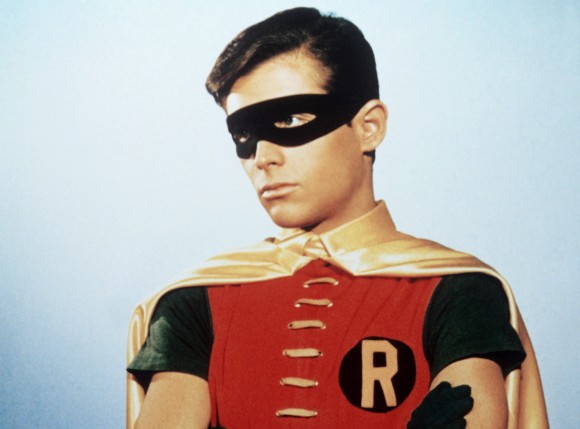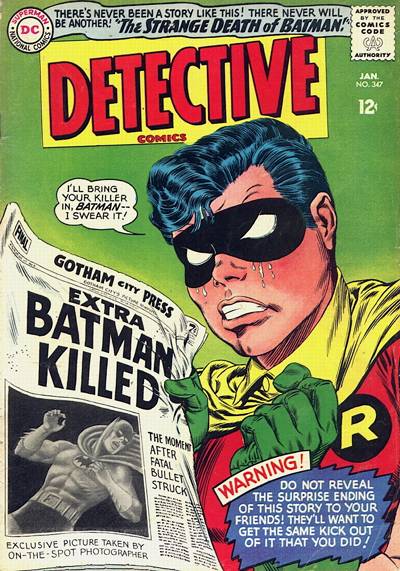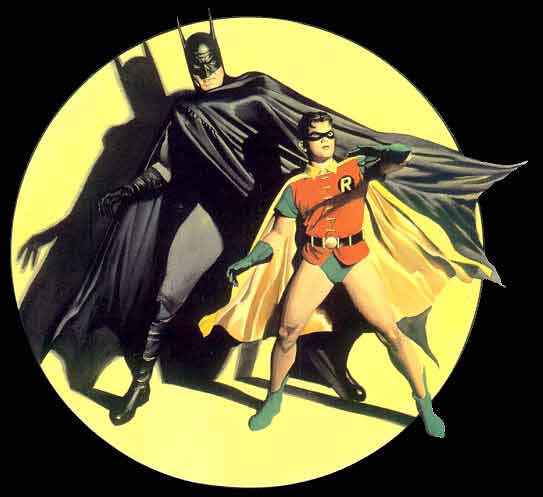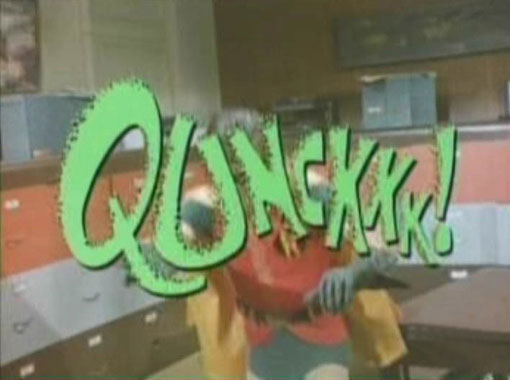Aw, hell, I’m just gonna throw this one out there: Burt Ward’s Robin the Boy Wonder is, upon great reflection and judgment, with all factors weighed, with pros and cons carefully calibrated, the Platonic ideal of the character.
Let me make myself clear: Burt Ward’s Robin the Boy Wonder is greater than any incarnation before or since, covering all media, including, yes, animation, films and comic books.
Accept this as truth. Because it is.
I swear I’m not kidding.
Now, there’s one qualification: “Boy Wonder.” This exempts Marv Wolfman and George Perez’s older, more mature “Teen Wonder” of the early 1980s, the one who ultimately ditched the shorts and pixie boots for a new guise as Nightwing. But we’re not going down that rabbit hole.
Here’s why I’m right:
1. He was blindly loyal and willing to run through any challenge, trap or danger to assist or rescue his mentor.
Ward’s Robin – and Dick Grayson – would do anything for Batman. He is far more devoted than any of the “official” Robins in comics lore: He would not reject him like Nightwing does; he would not defy him like Robin II, Jason Todd; his enthusiasm for the job far exceeds that of Tim Drake’s, the third Robin; and he’s far more respectful than Damian Wayne, the recently deceased fourth Robin. (And before you write in about any other Robins, these are the four main Robins, so just don’t.)
The only time Robin ever went up against Batman was to either save him or because he was – gasp! – drugged with Catwoman’s dastardly cataphrenic – which not only made him fall in love with the Feline Fatale’s sidekick, Pussycat, it made him fail to recognize, like the rest of America at the time, that the girl who played her, singer Lesley Gore, was a lesbian and not really into him at all.
2. Despite that last part, he was magnificently intelligent, if endearingly naïve.
I mean, even he was better than Batman at solving the Riddler’s vexing conundra. Who else could have solved this sphinx-worthy puzzle:
“There are three men in a boat with four cigarettes but no matches. How do they manage to smoke?”
Answer: “They throw one cigarette overboard and made the boat a cigarette lighter!”
Of course! The only possible answer, old chum!
And even when Batman — either cowled or in his secret true identity of millionaire Bruce Wayne — admonished him for being too presumptuous, or perhaps impetuous, Robin or Dick would invariably reply, “Gosh, yes, Batman. When you put it that way …”
3. Holy Sartorial Splendor – HE LOOKED JUST LIKE ROBIN!
Seriously! Dude could rock the red tunic!
Observe!
And observe! This is what Robin looked like on the cover of Detective Comics, two months before the show premiered in January 1966.
DEAD RINGERS!
Even modern comics artists saw how awesome that Robin outfit was. Check out Alex Ross’ homage:
Criticize the “Holy One-Track-Batcomputer-Mind!”s all you want. It doesn’t matter. Burt Ward perfectly captured what makes Robin so great: his loyalty, his smarts, his bravery and his looks.
“They had 1,100 young guys try out for the role,” Ward told me on the phone from his home in California, where he now owns the specialized dog-food company, Gentle Giants Dog Food. “And the executive producer, William Dozier, he had called me in to tell me—I mean I didn’t know what I was coming in for — but he says to me “We want you to play Robin and would you like to know why?’
“I said, ‘Yeah, I’d love to know why,’” he continued. “Well, we had 1,100 young guys that tried out for this role. It’s taken us nearly a year to cast this. The reason we picked you Burt, is because in our minds, if there really was a Robin, you’d be it. You personally. So we don’t want you to quote ‘act’. We just want you to be who you are. So all we want you to do is be very enthusiastic and do everything you have been doing and we’re satisfied with that.’”
Dozier was right on the money.
“We made Batman for all ages,” Ward said. “We were targeted more in the home for everybody in the family. From the littlest kids to the oldest seniors.
“So when we made Batman, we made it, you know, it was written very funny but it was played very straight and in fact, we were the first television show in history that actually put people on,” he explained. “In everything else, you saw a cop show and you expect ‘Adam-12’ rushing to the scene or Ben Casey or any of those medical shows and they’re all very serious about their subject matter.
“But with Batman, one of the huge successes was that it was the very first show that ever put people on,” he said. “For kids because it was written funny but played serious, they took the hero worship to heart. And they loved the idea of fighting heinous villains. And in the fight scenes, nobody ever got hurt and yet it was full of mayhem. And there was never any blood—never really anything objectionable. And even the villains that got socked over the head with a table or chairs, they were up again. So there wasn’t any real danger.
“Now for the adults,” he continued, “it was the nostalgia of the comic book and the adults had read the comic books and had remembered that and had fond memories as a child reading the comic books and now it was being brought to life.”
For decades, Ward’s Robin has been derided by “purists” as over-the-top campy, whether it was the actor or the guys who put the words in his mouth.
I’d argue that the reason the detractors feel this way is because that performance and that dialogue hit so close to home.
“Serious” fans squirm because Robin, especially Ward’s portrayal, is a reminder that no matter how developed and sophisticated an art form comics can be, it is a medium that we found in childhood and we are told, over and over, that we are supposed to put away childish things.
I refuse to do that. I love this stuff too much and it is too much fun.
For a long time, I was among the naysayers, the ones who panicked that they were making fun of my favorite characters.
I am so past that.
Because you dance with the one what brung ya.
A version of this story first ran at Parallel Worlds, my old blog. You can find my Julie Newmar piece here.







Trackbacks/Pingbacks